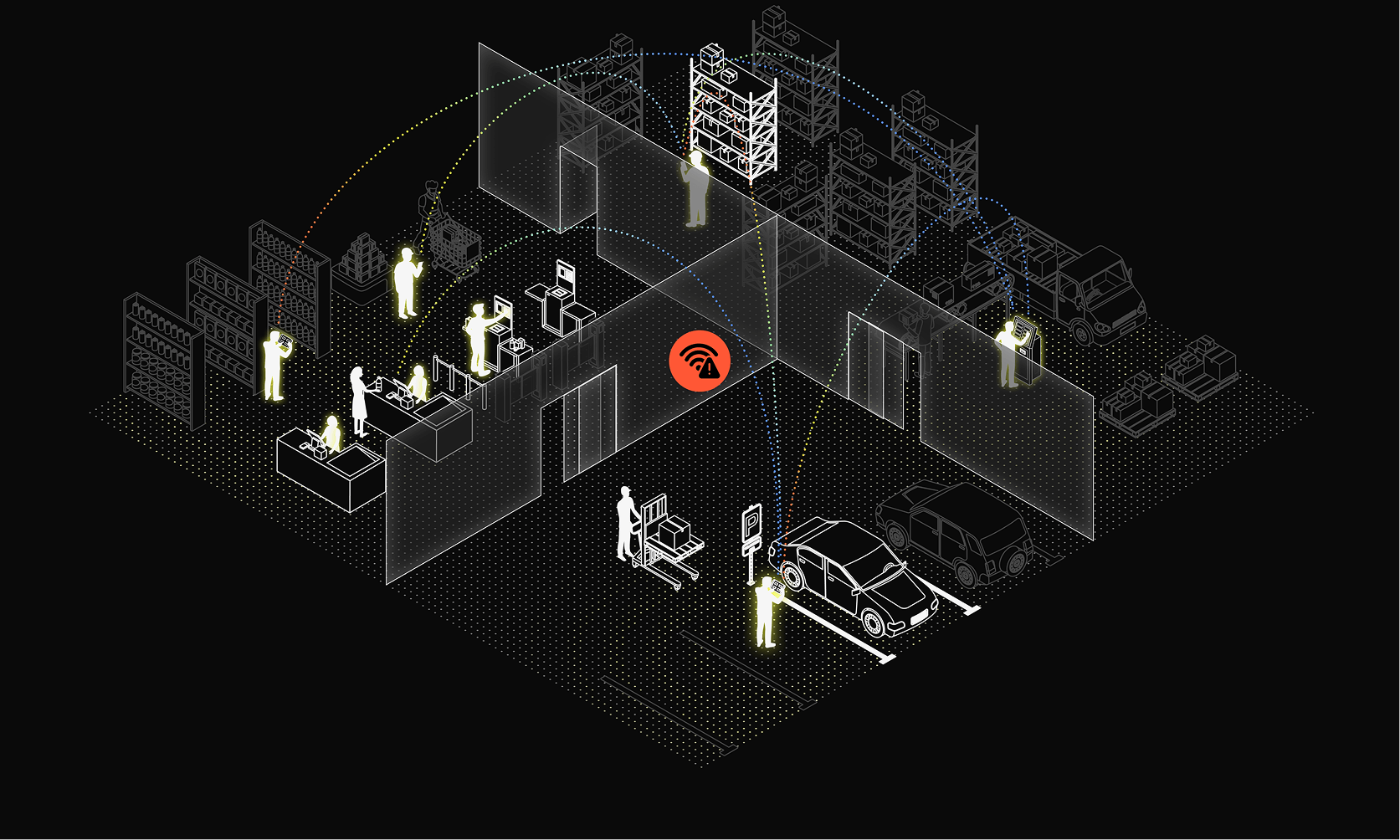Don’t let connectivity limit worker productivity

How confident are you in your mobile tools?
of warehouse workers said they experienced a dropped session at least once per shift; over 30% said at least once per hour
per day that workers spend resolving connectivity and mobile device issues
of retailers report that network downtime results in negative customer experience

- Retail Has Unique Wireless Infrastructure Challengesrequiring expensive and complex hardware that still result in dead zones
- Dropped Sessions are a Chronic Hindrancethat erode worker productivity, fulfillment, and front-of-house operations
- Customer Experience and Profitability Sufferwhen mobile workflows can't operate in real-time
- Reconnection isn't Quickoften requiring assistance from IT

- Software-Driven, Offline Networkingthat builds a peer-to-peer mesh network with just the mobile and edge devices you already have
- Build Resilient Workflows That Never Stallby enabling "offline" devices to relay real-time changes through nearby online devices
- Ensure Operational and Revenue Continuityby eliminating networking bottlenecks
- Drive Sustained Customer Servicefor BIPOS, curbside pickup, and more
Eliminate productivity loss
from dropped sessions

Sync Continuity for Warehouse Systems
Scan, make updates, and even sync when when disconnected, keeping critical systems online.
Maintain Operations During Peak Demand
Local networking ensures maximum reliability even when traditional networks are overloaded.
Eliminate Scan & Inventory Discrepencies
Confict-Free offline data ensures merging and audit accuracy from duplicate scans or unsynced inventory.

Consistent Service, Online or Off
Access, update, and even sync mobile workflows when offline to always deliver a high-quality customer experience.
Keep Your Associates Moving
Conduct cycle counts and inventory checks, stock shelves, and manage tasks without interruption.
Flawless BOPIS and Curbside Every time
Associates can locate, pack, and deliver orders regardless of connectivity.

Unstoppable Parking Connectivity
Eliminate system failures for your parking and curbside pickup services. Guarantee real-time transactions and task management with zero latency or interruptions.
Seamless Sync. Fast Operations.
Optimize curbside pickup and task assignments with our low-latency connection. Achieve maximum operational efficiency.
Mobility 4.0: Intelligent Connection
Transform your parking management with connectivity built for the future of curbside service.

Devices Running Ditto Never Drop Sessions
Workers don't notice lapses in connectivity. When a device goes offline, real-time data continues to flow through nearby devices, and to the cloud anytime data reaches an online device.


“Ditto has made something very complex seem simple with one of the best technical support teams in the world.”
“We never have to worry about internet connectivity anymore. The Ditto ecosystem solves for networking and data syncing, so our developers don’t have to.”

John KomarkowskiCo-founder
More WiFi infrastructure isn't the answer

Your mobile and edge devices are more powerful than you realize, capable of advanced networking without the need for new devices, hardware, or networking setups.
Meet customer expectations in every environment

Confidently deploy your mobile workflows, like curbside pickup in the parking lot, anywhere you need them without worrying about WiFi reach and cellular reception.
Seamlessly Sync Across Edge and Cloud
Ditto's rainbow connection and multi-hop capabilities ensure that even completely offline devices can still communicate with business-critical backend systems.
Dropped sessions typically occur due to WiFi dead zones, network congestion during peak hours, interference from metal shelving and infrastructure, and the inherent limitations of traditional cloud-dependent architectures. Even robust WiFi deployments can't eliminate all connectivity gaps in complex retail and warehouse environments.
Devices don’t wait for connection to WiFi, servers, or the cloud. They create a localized mesh network and sync directly with each other over Peer-to-Peer Wi-Fi (think Airdrop), Bluetooth Low Energy, or Local Area Network. If one connection drops, Ditto automatically reroutes through another channel or device within the network.
All data is stored locally on the device and continues to be updated. But that's not all; as long as at least one device in the local mesh network has connectivity, your devices are never truly offline. Data flows through the mesh to reach the backend, so workers can continue syncing in real-time even in WiFi dead zones. Online or offline, Ditto's conflict-free architecture ensures that all changes sync automatically without data loss or duplication issues even if multiple workers scanned the same item while offline.
Ditto’s self-healing mesh networking drastically reduces slow sync, data loss, downtime and, ultimately, escalations to onsite IT. That means fewer firefights and more bandwidth for your teams to focus on growth initiatives, innovation, and new rollouts.
Ditto's offline-first, embedded database stores data in structured JSON-like document objects, similar to NoSQL. It runs within your app (on mobile, web, IoT, etc.), allowing you to read and write data even without an internet connection. Each instance of the Edge SDK maintains its own local datastore, so the app remains fully functional offline and can share data locally. Learn more here.
Ditto complements your existing cloud systems with edge-native technology built to thrive in disconnected situations. The cloud still plays a role for central reporting, analytics, and cross-location visibility, but your locations are never dependent on it for real-time operations. Ditto opportunistically syncs back to the cloud whenever a connection is available. Learn more about how Ditto works with your cloud here.
In Ditto's implementation, conflicts are automatically resolved, merged, and synced across peers without the need for coordination or validation from a centralized authority. Learn more about Ditto’s CRDT.
Encrypted at the transport layer using version 1.3 of the Transport Layer Protocol (TLS), clients and servers are mutually authenticated prior to transmission of API and peer-to-peer access credentials. The use of mutually authenticated TLS (mTLS) mitigates potential risks posed by outside attackers attempting to masquerade as a valid API endpoint or peer in the mesh network to steal information.
Additionally, Ditto workloads and services are tightly controlled in a containerized Kubernetes environment.








